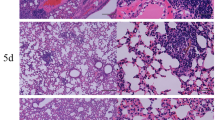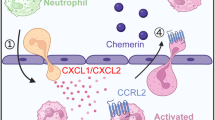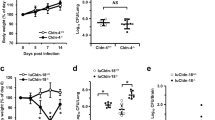Abstract
We previously reported that massive infiltration of neutrophils in C3H/HeN (C3H) mice could not efficiently control Chlamydia muridarum (Cm) infection and might contribute to the high susceptibility of these mice to lung infection. To further define the nature of neutrophil responses in C3H mice during chlamydial infection, we examine the expression of adhesion molecules and CD11b related to neutrophils infiltration and activation, respectively, following intranasal Cm infection. The results showed that the expression of selectins (E-selectin, P-selectin and L-selectin), and intercellular cell adhesion molecule-1 (ICAM-1) in the lung of C3H mice increased more significantly than in C57BL/6 (B6) mice, the more resistant strain. These results correlated well with the massive neutrophils infiltration in C3H mice. In contrast, CD11b expression on peripheral blood and lung neutrophils in C3H mice exhibited a significant reduction compared with B6 mice during the late phage of infection (day 14). These findings suggest that the high-level expression of adhesion molecules in C3H mice may enhance neutrophils recruitment to the lung, but the decline of CD11b expression on neutrophils may attenuate neutrophil function. Therefore, CD11b down-regulation on neutrophils may contribute to the failure of C3H mice to control chlamydial lung infection.
This is a preview of subscription content, access via your institution
Access options
Subscribe to this journal
Receive 12 digital issues and online access to articles
$119.00 per year
only $9.92 per issue
Buy this article
- Purchase on SpringerLink
- Instant access to full article PDF
Prices may be subject to local taxes which are calculated during checkout
Similar content being viewed by others
Author information
Authors and Affiliations
Corresponding authors
Rights and permissions
About this article
Cite this article
Tang, X., Bu, X., Zhang, N. et al. Inefficiency of C3H/HeN Mice to Control Chlamydial Lung Infection Correlates with Downregulation of Neutrophil Activation During the Late Stage of Infection. Cell Mol Immunol 6, 253–260 (2009). https://doi.org/10.1038/cmi.2009.34
Received:
Accepted:
Issue date:
DOI: https://doi.org/10.1038/cmi.2009.34



